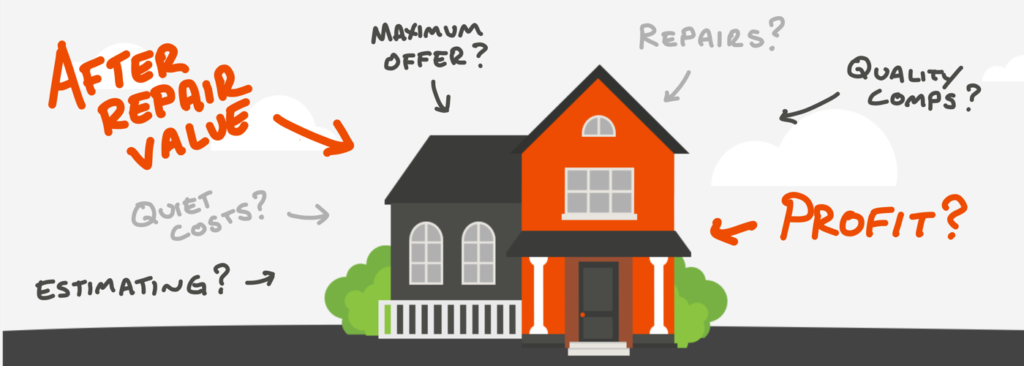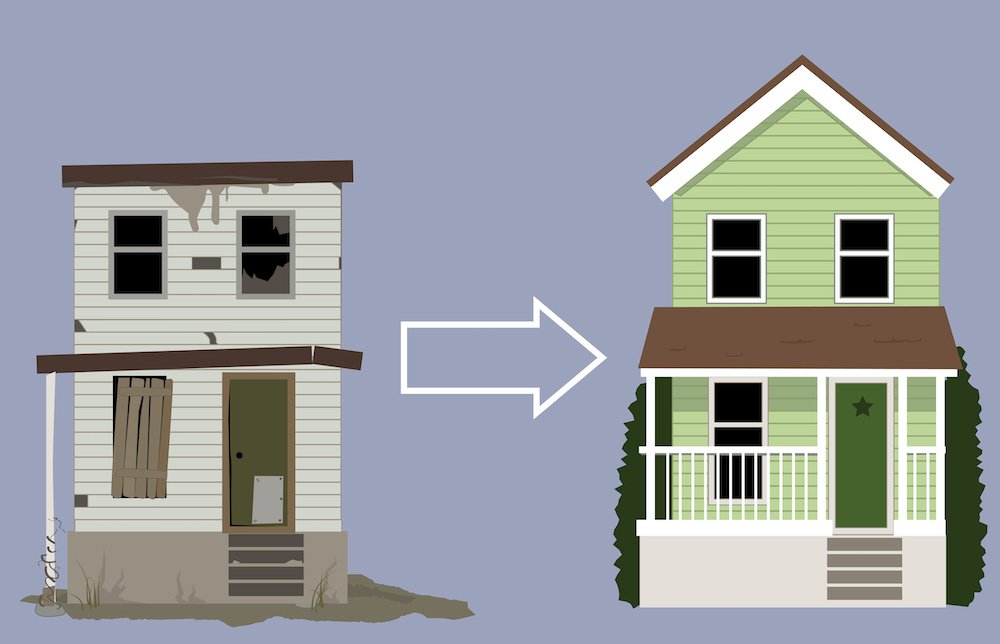
Flipping houses can be a lucrative venture, but not every property is a goldmine. Knowing how to spot a profitable fix-and-flip property is the key to maximizing your returns while minimizing risks. Many beginner investors make the mistake of jumping into a deal without proper research, leading to financial losses or prolonged turnaround times.
In this guide, we’ll break down the essential factors to consider when identifying a great fix-and-flip opportunity. From location and market analysis to renovation costs and exit strategies, you’ll learn how to evaluate properties like a seasoned investor.
1. Understanding Market Trends in Your Area

Before purchasing any property, it’s crucial to analyze the local real estate market. The profitability of a fix-and-flip deal depends heavily on market trends, neighborhood desirability, and buyer demand.
- Study Recent Sales Data
Research comparable properties (comps) in the area to determine if homes are selling quickly and at profitable margins. A hot market with high demand and low inventory is ideal for a fix-and-flip project. - Evaluate Economic Growth
Look at employment rates, new business developments, and infrastructure improvements. A growing economy increases property values and attracts potential buyers. - Check Seasonality Trends
Real estate markets fluctuate throughout the year. Spring and summer are typically the best seasons for selling a flipped home, while winter months may slow down buyer interest.
2. Choosing the Right Neighborhood

The neighborhood of a property is just as important as the house itself. A well-renovated home in the wrong location will struggle to attract buyers.
- Low Crime Rate and Good Schools
Buyers prioritize safety and education. Research crime statistics and school district ratings to ensure the property is in a desirable area. - Proximity to Amenities
Homes near shopping centers, parks, and public transportation have higher resale value. Walkability and convenience are attractive selling points. - Rising Home Values
Look for neighborhoods experiencing property value appreciation. Avoid areas with stagnant or declining home prices, as they may take longer to sell.
3. Finding Distressed Properties with High Potential
Distressed properties—such as foreclosures, short sales, and neglected homes—often offer the best fix-and-flip opportunities. These homes can be purchased at a lower price, leaving room for profitable renovations.
- Search Off-Market Deals
Not all profitable properties are listed on the MLS. Consider direct mail campaigns, networking with wholesalers, or working with real estate agents specializing in distressed properties. - Check for Structural Soundness
Cosmetic issues are easy to fix, but major structural problems can turn a deal into a money pit. Always inspect the foundation, roof, plumbing, and electrical systems before purchasing. - Understand Seller Motivation
A motivated seller is more likely to negotiate. Homeowners facing foreclosure, financial difficulties, or inherited properties may be willing to sell below market value.
4. Estimating Renovation Costs Accurately
One of the biggest mistakes in house flipping is underestimating renovation costs. Without a clear budget, profits can quickly disappear.
- Conduct a Thorough Home Inspection
Hire a professional inspector to identify potential repair issues. This helps prevent unexpected expenses during the renovation process. - Create a Detailed Renovation Budget
List all necessary repairs, materials, labor costs, and permit fees. Factor in a contingency budget (typically 10–20%) for unforeseen expenses. - Focus on High-Impact Upgrades
Kitchen and bathroom remodels offer the highest return on investment. Also, consider curb appeal enhancements, such as fresh paint, landscaping, and updated fixtures.
5. Calculating After-Repair Value (ARV) and Profit Margins
The After-Repair Value (ARV) is the estimated price a property will sell for after renovations. This figure is crucial in determining whether a fix-and-flip deal is worth pursuing.
- Use Comparable Sales Data
Analyze similar homes in the area that have recently sold to estimate ARV. Look at size, condition, and upgrades to make accurate comparisons. - Apply the 70% Rule
A common rule in house flipping states that an investor should pay no more than 70% of the ARV minus repair costs. This ensures a healthy profit margin. - Account for Selling Costs
Factor in closing costs, real estate agent commissions, and holding costs (such as property taxes and insurance). These expenses can significantly impact your bottom line.
6. Understanding Financing Options for Flipping
Most fix-and-flip investors don’t pay cash for properties—they use financing options tailored to flipping. Choosing the right funding method can improve your ROI and cash flow.
- Hard Money Loans
These short-term, high-interest loans are ideal for flippers who need quick capital. They are based on the property’s value rather than the investor’s credit score. - Private Money Lenders
Private investors offer flexible loan terms and faster approval than traditional banks. Networking with private lenders can be a game-changer for house flippers. - Home Equity and Business Lines of Credit
If you have existing real estate assets, tapping into home equity or using a business credit line can provide financing for your flip.
7. Selling the Property Quickly for Maximum Profit
A successful fix-and-flip isn’t just about renovations—it’s also about selling the home efficiently to maximize profits.
- Stage the Home for a Strong First Impression
Professionally staged homes sell faster and at higher prices. Highlight the best features of the property with modern furniture, neutral colors, and bright lighting. - Market Aggressively
Use high-quality photos, virtual tours, and social media marketing to attract buyers. Hosting open houses and working with an experienced real estate agent can speed up the selling process. - Price Competitively
Overpricing a flipped home can lead to prolonged market time, while underpricing can cut into profits. Set a price based on comparable sales and current demand.
Conclusion: The Key to a Profitable Fix-and-Flip
Success in house flipping comes down to research, budgeting, and strategic execution. By understanding how to spot a profitable fix-and-flip property, you can make informed investment decisions that lead to significant financial gains.
The best deals are found in the right markets, in desirable neighborhoods, and with carefully estimated renovation costs. Financing smartly and selling efficiently ensures a faster turnaround and higher profits.
If you’re serious about building a successful house-flipping business, take the time to develop a strategy, build a reliable team, and continuously analyze market trends. A well-planned fix-and-flip project can be your stepping stone to financial freedom in the real estate industry.





